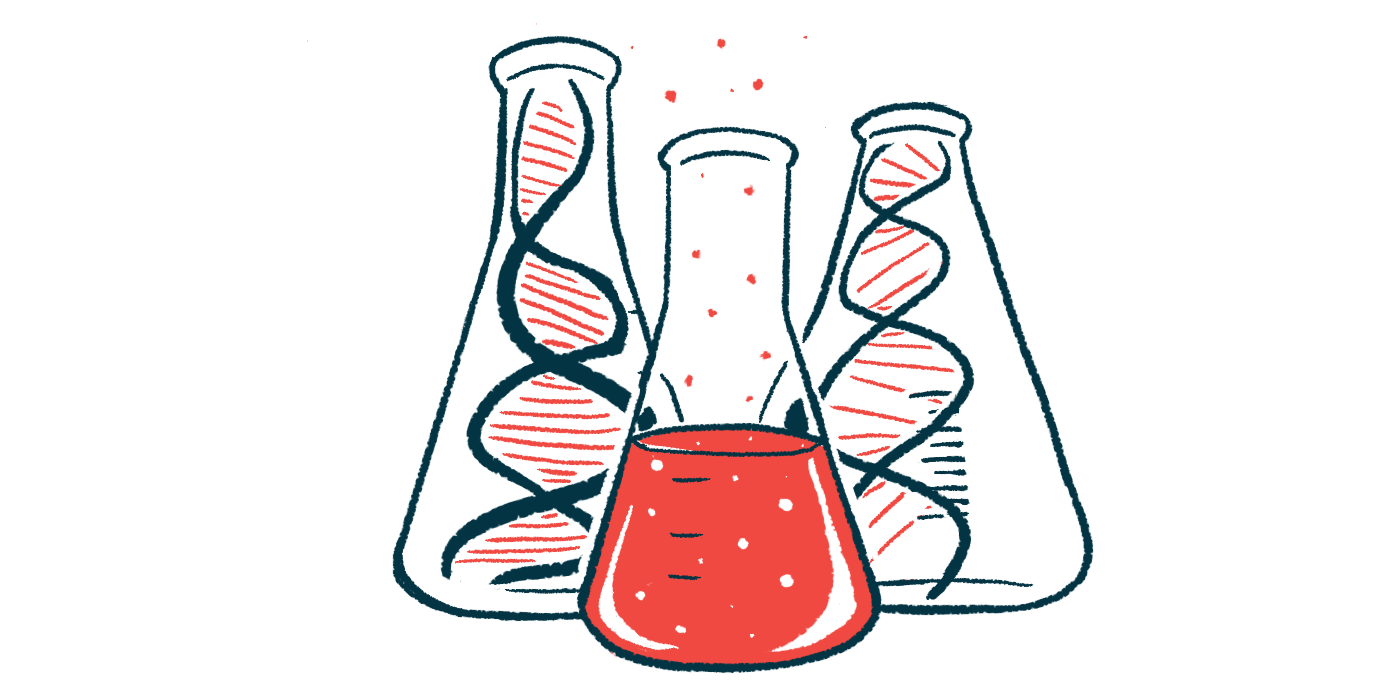Higher PR3-related AAV relapse risk may be tied to gene mutation
Researchers hail study as first to correlate risk variant with increased PRTN3 mRNA levels

A gene variant linked to increased production of proteinase-3 (PR3) — one of the targets of disease-causing antibodies in ANCA-associated vasculitis (AAV) — is more common among patients with anti-PR3 antibodies than those with antibodies against the myeloperoxidase (MPO) protein, a study showed.
The higher blood PR3 levels with this variant may explain the higher relapse risk associated with PR3-targeting AAV, the researchers noted.
“Clinicians have long associated PR3-ANCA with increased relapse risk compared to MPO-ANCA. We show that this risk may, in part, be explained by increased PR3 availability,” the researchers wrote in the study, “PRTN3 variant correlates with higher autoantigen expression and increased relapse risk in PR3-ANCA versus MPO-ANCA disease,” which was published in the Journal of Clinical Investigation Insight.
AAV is marked by inflammation in small blood vessels caused by self-targeting antibodies, called anti-neutrophil cytoplasmic autoantibodies (ANCAs). These typically target one of two proteins — PR3 or MPO — in neutrophils, a type of immune cell, resulting in their abnormal activation.
Microscopic polyangitis (MPA), the most common AAV type, is usually accompanied by MPO-ANCAs. Anti-PR3 antibodies are mostly found in people with granulomatosis with polyangiitis (GPA), a type typically linked to a higher risk of relapse.
Variants in the PRTN3 gene, which provides instructions to produce PR3, have been identified in GPA patients.
A specific variant, called rs62132293, located in a region close to the PRTN3 gene, was previously shown to increase the levels of PRTN3’s messenger RNA (mRNA) in healthy people. mRNA is the intermediate molecule derived from DNA that guides protein production.
Analyzing PRTN3 gene variant in AAV
However, the influence of this variant on the levels of PRTN3’s mRNA, on circulating PR3 protein, and on disease features and its course in people with AAV remains unclear, leading researchers at the University of North Carolina at Chapel Hill to analyze its presence and effects in 401 people with AAV and 130 healthy people, who functioned as controls.
A total of 197 (49%) patients had MPO-ANCAs, 170 (42%) had PR3-ANCAs, nine (2%) were positive for both, and 25 (6%) were negative for these ANCAs. Most had been diagnosed with either MPO (46%) or GPA (37%).
Results showed that comparable proportions of AVV patients and healthy controls carried one or two copies of the rs62132293 variant.
Among AAV patients, those with PR3-ANCAs were 46% more likely to carry at least one copy of the variant than those with MPO-ANCAs. A greater proportion of PR3-ANCA patients carried two copies of the variant relative to those with MPO-ANCAs (11.8% vs. 7.6%).
Patients carrying one or two copies of the rs62132293 variant had significantly higher PRTN3’s mRNA levels in their white blood cells than noncarrier patients. No such association was observed among healthy controls. Also, no significant differences in the levels of MPO’s mRNA levels were observed across groups.
The researchers also found that the increased PRTN3’s mRNA levels in AAV patients carrying the rs62132293 variant were significantly associated with higher PR3 protein levels in the blood.
When adjusted to the number of neutrophils, PR3 levels were found to be significantly higher in carriers of the genetic variant relative to noncarriers. Also, carriers presented significantly higher levels of PR3-ANCAs than those without the variant. Healthy controls had low blood PR3 levels, regardless of their rs62132293 variant status.
Remission rates at follow-up
Follow-up data for 390 patients showed that all groups achieved remission at similar rates — between 88% and 91% — regardless of their rs62132293 variant status. After remission, patients with PR3-ANCAs were 48% more likely to relapse than those with MPO-ANCAs, and to do so significantly faster.
Among carriers of the genetic variant, PR3-ANCA patients had significantly reduced relapse-free survival and a 66% increased risk of relapse compared with those with MPO-ANCAs.
“Our study is the first to correlate the risk variant rs62132293 with increased [PRTN3 mRNA levels] and circulating PR3 in patients with ANCA vasculitis and show the impact on clinical disease [features],” the researchers wrote, noting the findings highlight the presence of higher PRTN3’s mRNA and PR3 levels “in patients with rs62132293 (PRTN3) variant and increased relapse among carriers who have PR3-ANCA compared to those with MPO-ANCAs.”
“While the current clinical focus is on the presence of [self-targeting antibodies] and symptoms, our data warrant further investigation into threshold [PR3 protein] values that could offer relapse prediction among PR3-ANCA vasculitis patients,” they concluded.








